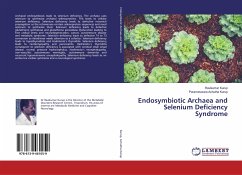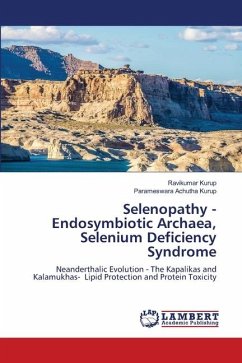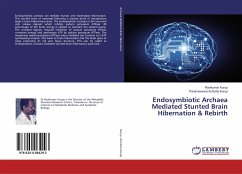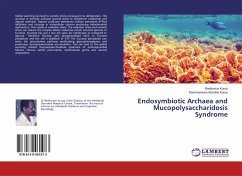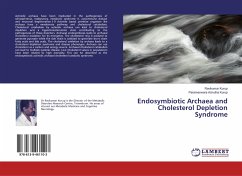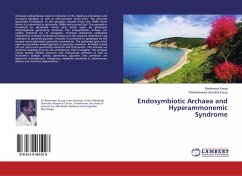
Endosymbiotic Archaea Mediated Selenium Deficiency Systemic Syndrome
Versandkostenfrei!
Versandfertig in 6-10 Tagen
41,99 €
inkl. MwSt.

PAYBACK Punkte
21 °P sammeln!
Endosymbiotic archaea can lead to selenium depletion from the human body as it needs selenium to synthesize archaeal methanogenic selenoproteins. Archaeal endosymbiosis leads on to a selenium deficiency syndrome. Archaeal endosymbiosis and selenium deficiency can leads to Hashimoto's autoimmune thyroiditis, autoimmune dementia, cerebral small vessel disease and normal pressure hydrocephalus. Archaeal endosymbiosis can lead to autoimmune hepatitis and chronic liver disease as well as interstitial lung disease. Endosymbiotic archaea can also induce a dysautonomic syndrome. It can also induce pol...
Endosymbiotic archaea can lead to selenium depletion from the human body as it needs selenium to synthesize archaeal methanogenic selenoproteins. Archaeal endosymbiosis leads on to a selenium deficiency syndrome. Archaeal endosymbiosis and selenium deficiency can leads to Hashimoto's autoimmune thyroiditis, autoimmune dementia, cerebral small vessel disease and normal pressure hydrocephalus. Archaeal endosymbiosis can lead to autoimmune hepatitis and chronic liver disease as well as interstitial lung disease. Endosymbiotic archaea can also induce a dysautonomic syndrome. It can also induce poly endocrine dysfunction consisting of GAD antibody positive diabetes mellitus, Hashimoto's thyroiditis, recurrent hyponatraemia and autoimmune adrenalitis. It can also lead on to cholesterol depletion and sex hormone deficiency. Archaeal endosymbiosis leads to tissue mucopolysaccharide accumulation and the syndrome of mucoid angiopathy, pancreatitis (CCP), thyroid disease (MNG) and cardiomyopathy (EMF). The archaeal endosymbiosis produces a multisystem selenium deficiency syndrome.



